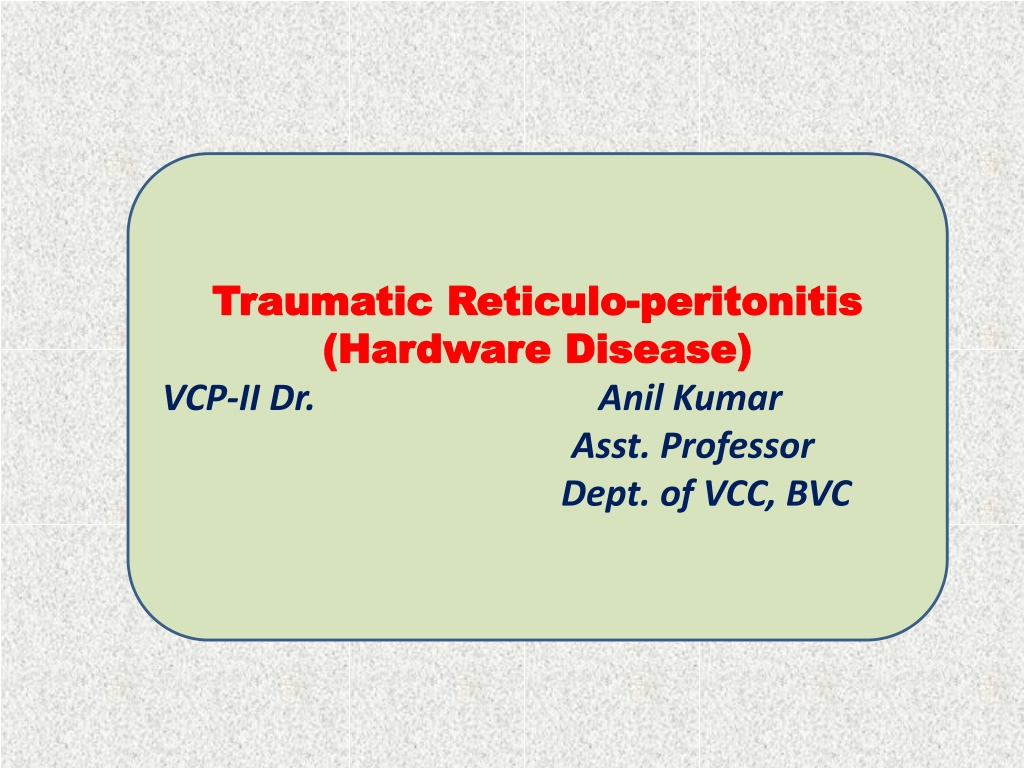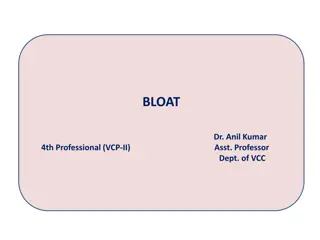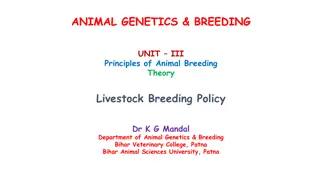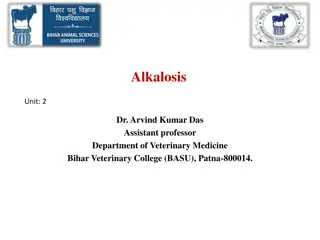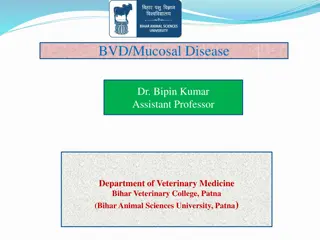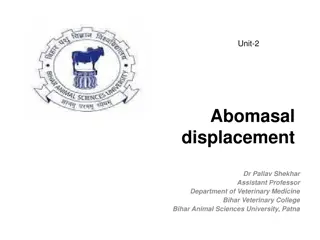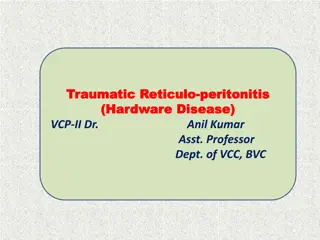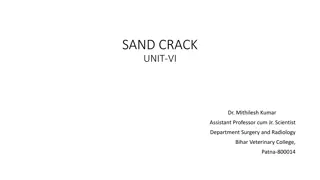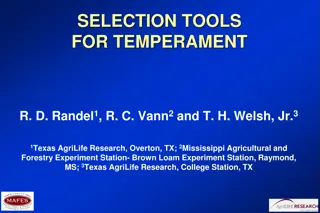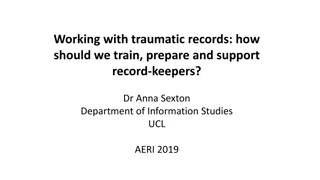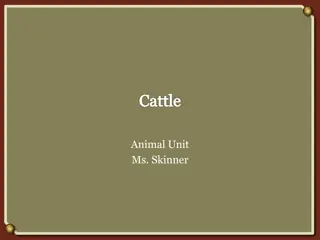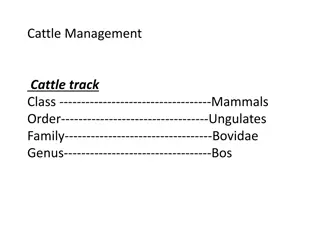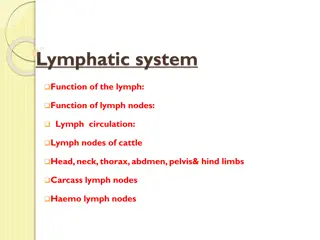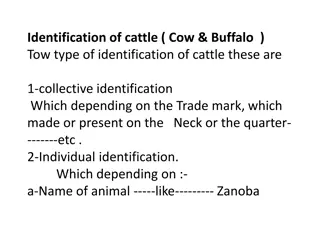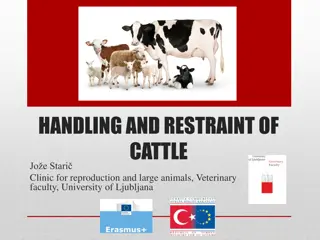Traumatic Reticuloperitonitis in Cattle
Traumatic reticuloperitonitis, also known as hardware disease, is a serious condition in cattle caused by the ingestion of foreign objects. The perforation of the reticulum wall leads to peritonitis and potential complications affecting various body systems. Recognizing the clinical signs, such as sudden milk production decrease and hesitant movements, is crucial for early diagnosis and treatment.
Download Presentation

Please find below an Image/Link to download the presentation.
The content on the website is provided AS IS for your information and personal use only. It may not be sold, licensed, or shared on other websites without obtaining consent from the author.If you encounter any issues during the download, it is possible that the publisher has removed the file from their server.
You are allowed to download the files provided on this website for personal or commercial use, subject to the condition that they are used lawfully. All files are the property of their respective owners.
The content on the website is provided AS IS for your information and personal use only. It may not be sold, licensed, or shared on other websites without obtaining consent from the author.
E N D
Presentation Transcript
Traumatic Traumatic Reticulo (Hardware Disease) (Hardware Disease) VCP-II Dr. Dept. of VCC, BVC Reticulo- -peritonitis peritonitis Anil Kumar Asst. Professor
Traumatic Reticuloperitonitis (Hardware Disease) Consequence of perforation of the reticulum Most common in mature dairy cattle, occasionally seen in beef cattle, and rarely reported in other ruminants. Aetiology: Accidental ingestion of foreign body through feed or while grazing in the pasture. Lack of oral discrimination in animal Incomplete mastication of feed before swallowing. Tendency to lick metallic object Greedy feeding Pathogenesis: Swallowed metallic objects directly falls into the reticulum or pass into the rumen Carried over the rumino-reticular fold into the cranio-ventral part of the reticulum
The is elevated reticulo-omasal orifice tends to retain heavy objects in the reticulum, and the honeycomb-like reticular mucosa traps sharp objects. Contractions penetration of the wall by the foreign object. In late pregnancy uterus give compression reticulum wall and straining during parturition increase the likelihood of penetration of the reticulum and may also disrupt adhesions caused by an earlier penetration promote the on rumino- an initial Reticulum (Honey Comb) (Serem et al., Inter J Vet Sci, 2018, 8(2): 73-78)
Perforation of the wall of the reticulum allows leakage of ingesta and bacteria, which contaminates the peritoneal cavity. Initially, peritonitis is generally localized and adhesions takes place The object can penetrate the diaphragm and enter the thoracic cavity pleuritis and pulmonary abscessation) and The pericardial sac causing pericarditis and sometimes followed by myocarditis (causing sometimes
Clinical Findings: Sudden onset of rumino- reticular atony and a sharp fall in milk production Mildl increased temperature HR: Normal increased Respiration: Usually shallow and rapid Arched back; expression; a reluctance to move; and an uneasy, careful gait A grunt produced by applying pressure to the xiphoid or by firmly pinching the withers or slightly anxious
Placing a stethoscope over the trachea and applying pressure or pinching the withers at the end of an inspiration. Tremor of the triceps and abduction of the elbow may be seen. Bilateral jugular extension Chronically: The feed intake and fecal output are reduced, and milk production also remain reduced As the acute inflammation subsides, there is less abdominal pain and temperature become normal Some may develop vagal indigestion due to adhesion on ventromedial reticulum. IF HEART or LUNG INVOLVED: There is depression, tachycardia (>90 bpm), and pyrexia (104 F) in both pleuritis or pericarditis Pleuritis is manifest by fast, shallow respiration Muffled lung sounds Pleuritic friction rubs
Thoracentesis givess several liters of septic fluid Traumatic pericarditis HAVE muffled heart sounds Pericardial friction rubs or gas and fluid splashing sounds (washing machine murmur) can be heard on auscultation at initial episodes Jugular vein distention and congestive heart failure with marked submandibular and brisket edema is a frequent sequela of traumatic reticulopericarditis with GRAVE PROGNOSIS. Penetration through the pericardium into the myocardium LEAD TO extensive hemorrhage into the pericardial sac or ventricular arrhythmias and sudden death. Diagnosis: History (when available) and clinical findings Laboratory tests (neutrophilia with a left shift, Plasma fibrinogen ) May have marked hypokalemic, hypochloremic metabolic alkalosis Peritoneal fluid analysis (d-dimer and the neutrophil percentage )for peritonitis
Magnetic compass Ultrasonography using a 3-MHz transducer is the most accurate way to diagnose localized peritonitis near the reticulum at the ventral abdomen and characterize the reticular contraction frequency Lateral radiographs of the cranio-ventral abdomen can detect metallic material in the reticulum Electronic metal detector Treatment: Surgical or Medical Medical treatment involves: Use of antimicrobials to control the peritonitis and a magnet to prevent recurrence. Because of the mixed bacterial flora in the lesion, a broad-spectrum antimicrobial agent such as oxytetracycline (16 mg/kg/day, IV) should be used.
Penicillin (22,000 IU/kg, IM, once to twice daily) is widely used and effective in many cases despite its limited spectrum. Surgical Methods: Rumenotomy with manual removal of the object(s) Antimicrobials peri-operatively Prevention: Avoiding the use of baling wire, passing feed over magnets to remove metallic objects. Keeping cattle away from sites of new construction, and completely removing old buildings and fences. Additionally, bar magnets may be administered PO, preferably after fasting for 18-24hr . Usually, the magnets remains in the reticulum and holds any ferromagnetic objects on its surface. To minimizes the incidence of TRP, giving magnets to all herd replacement heifers and bulls at 1 yr of age are recommended
